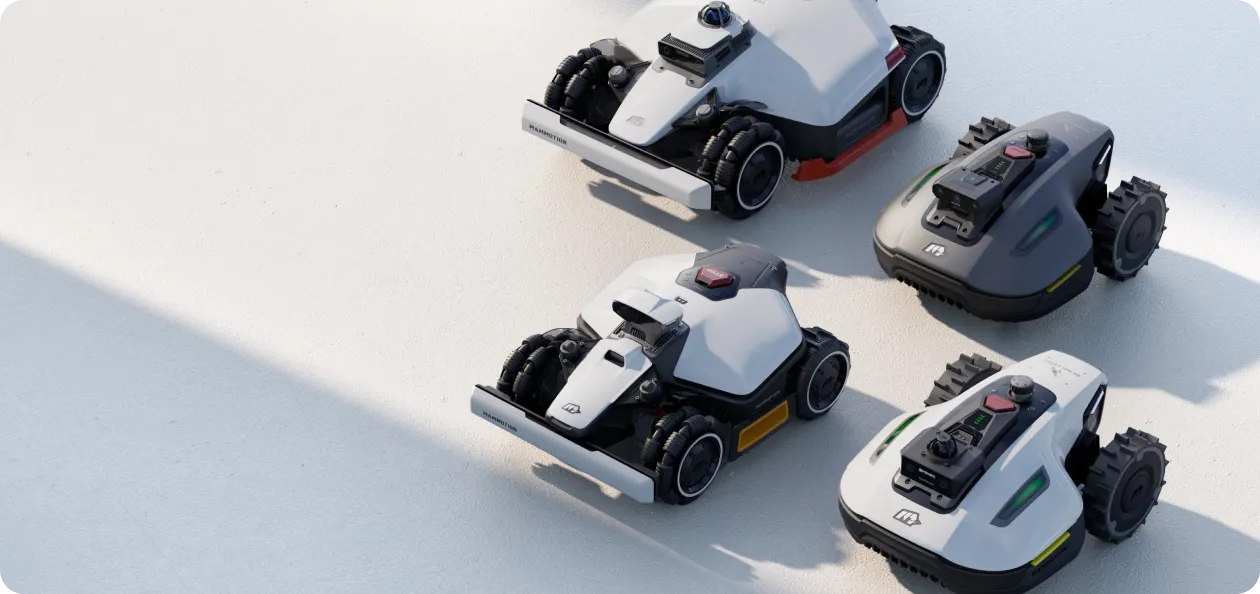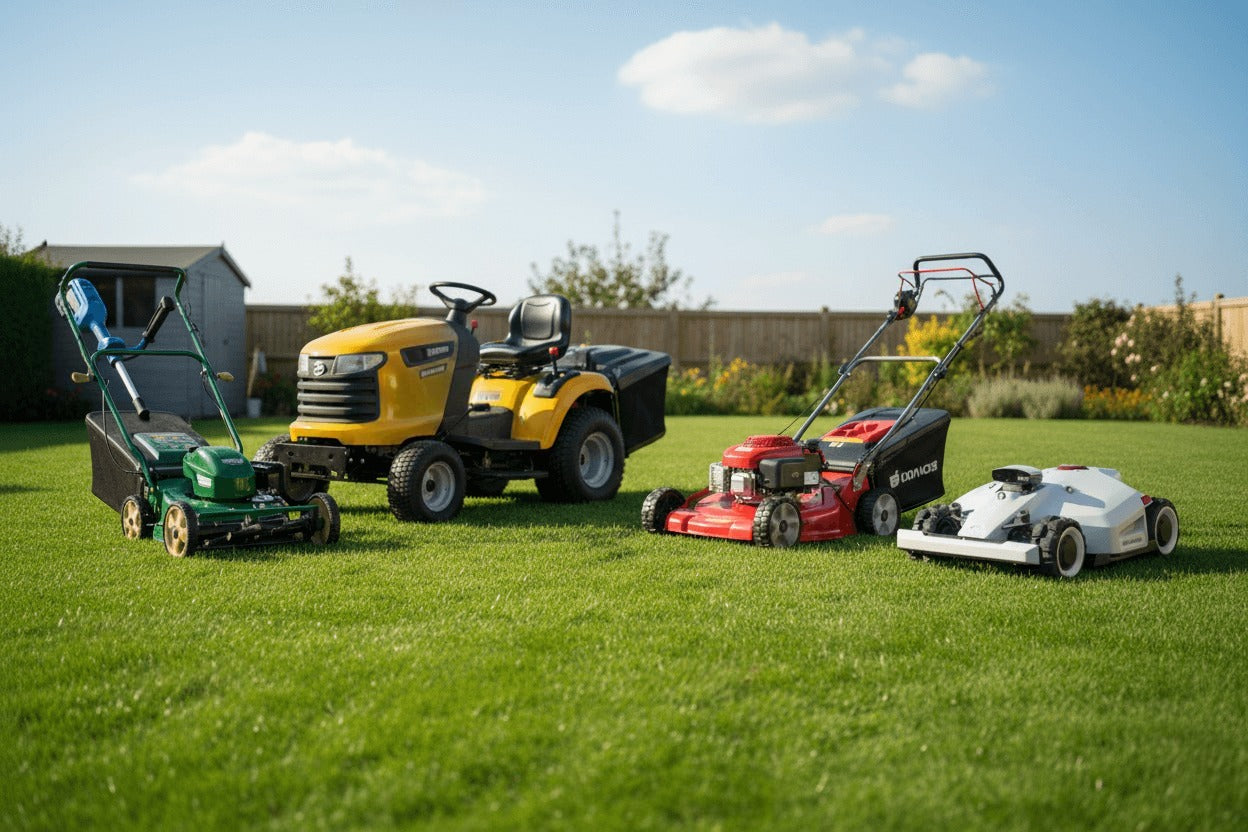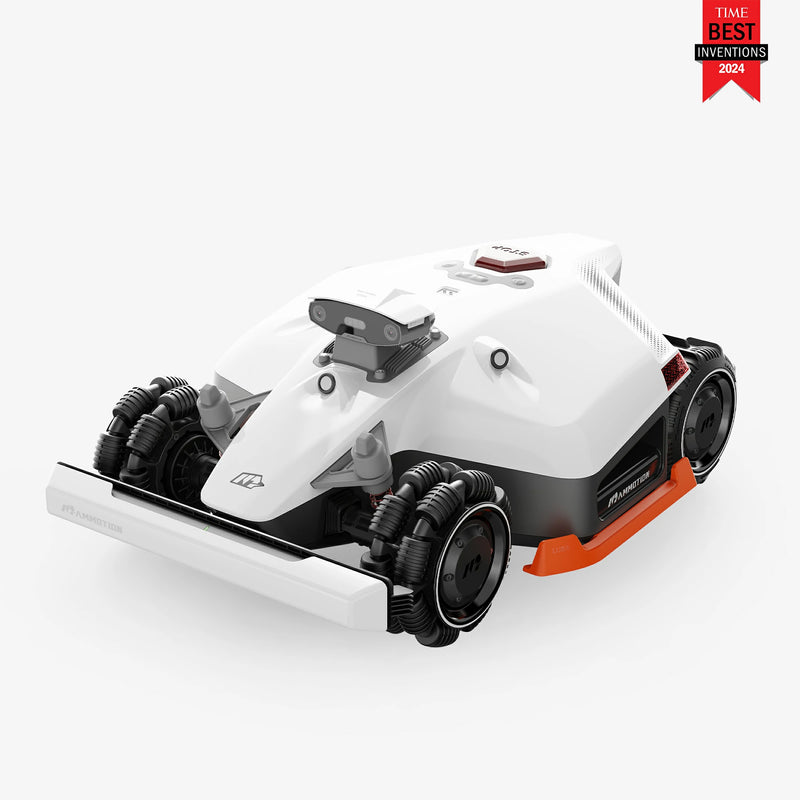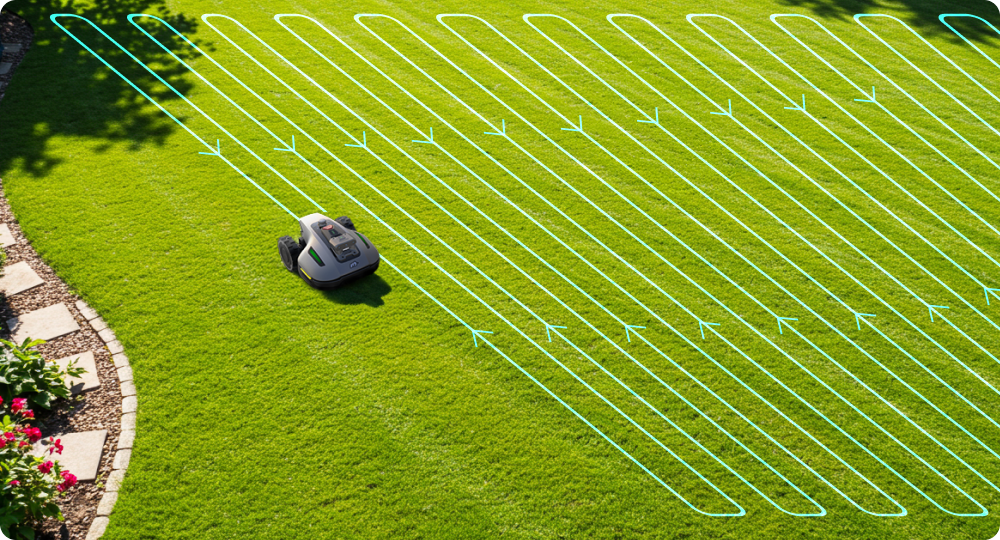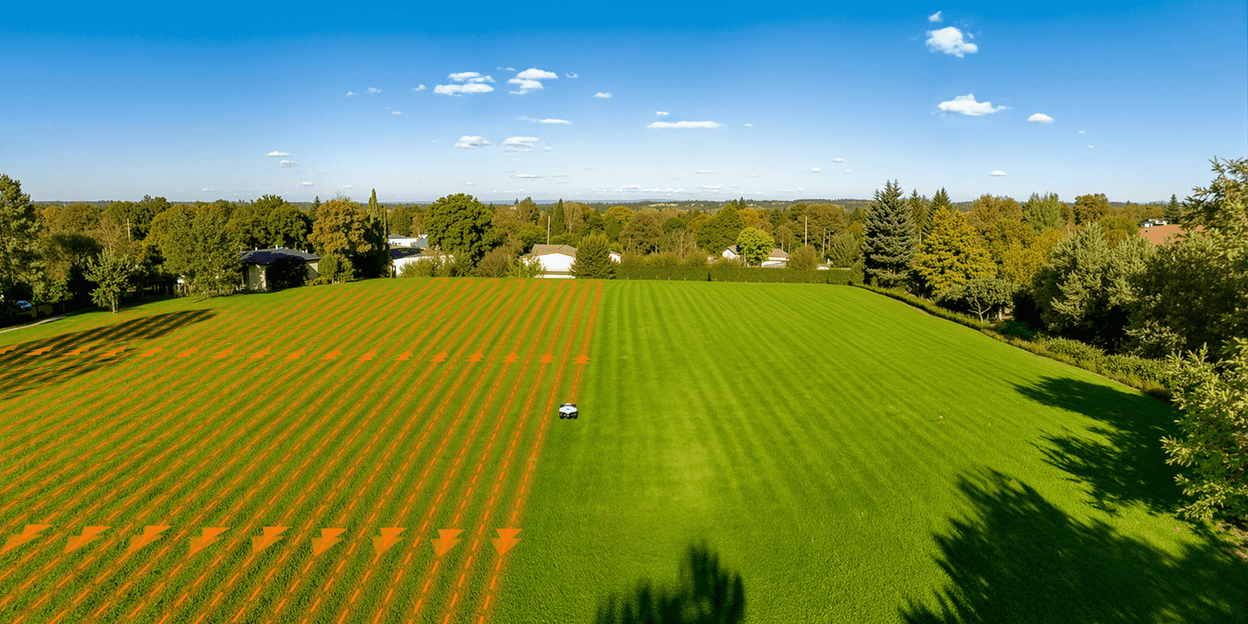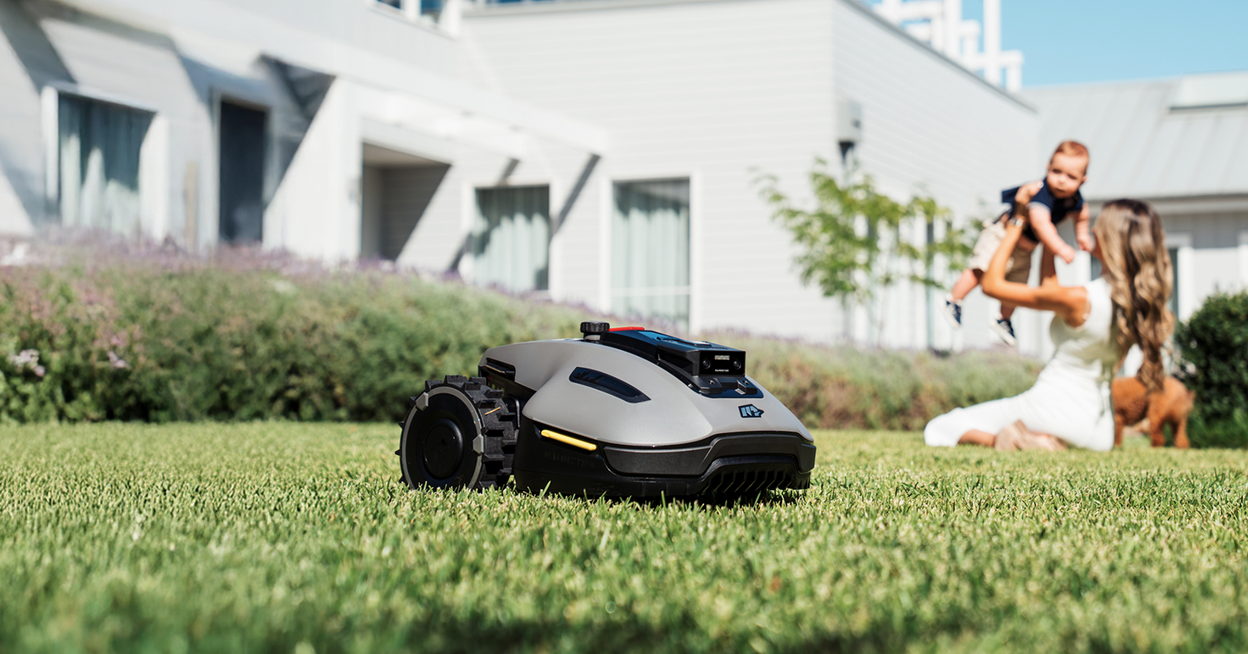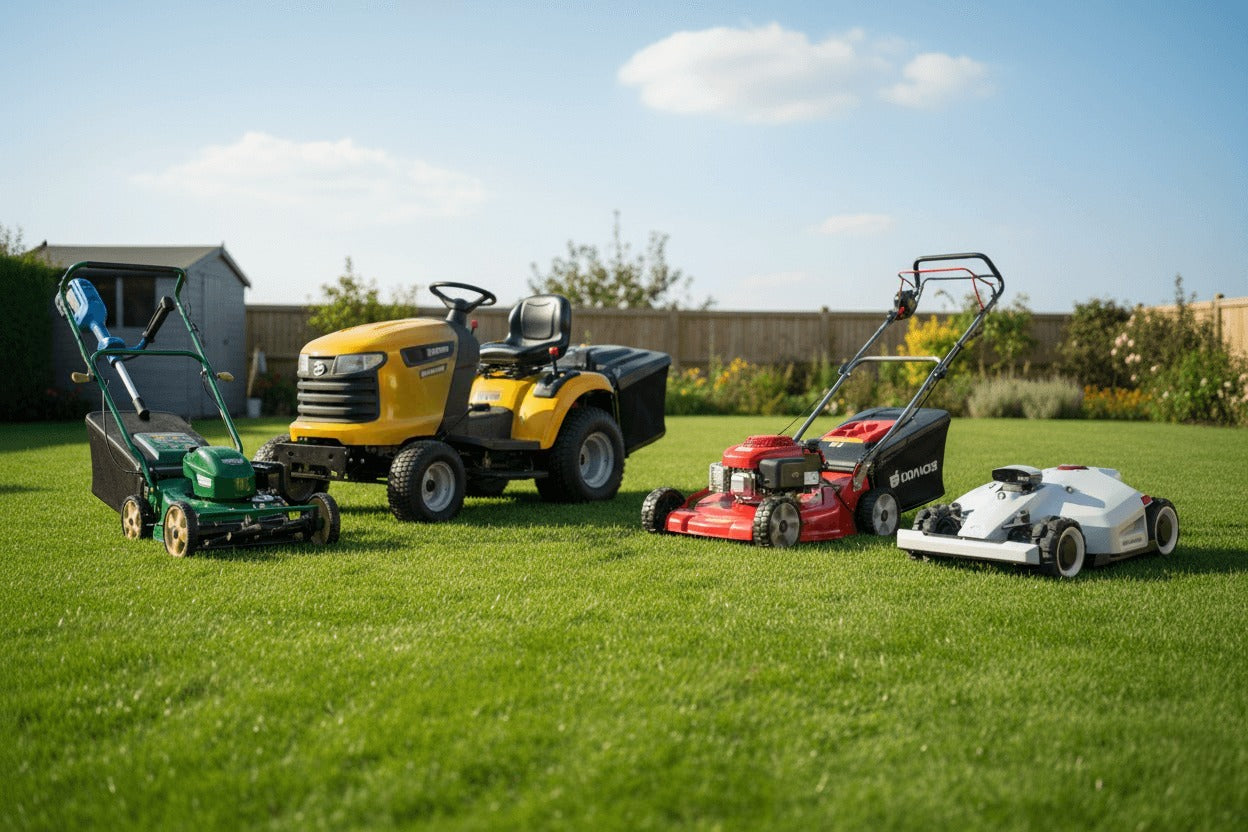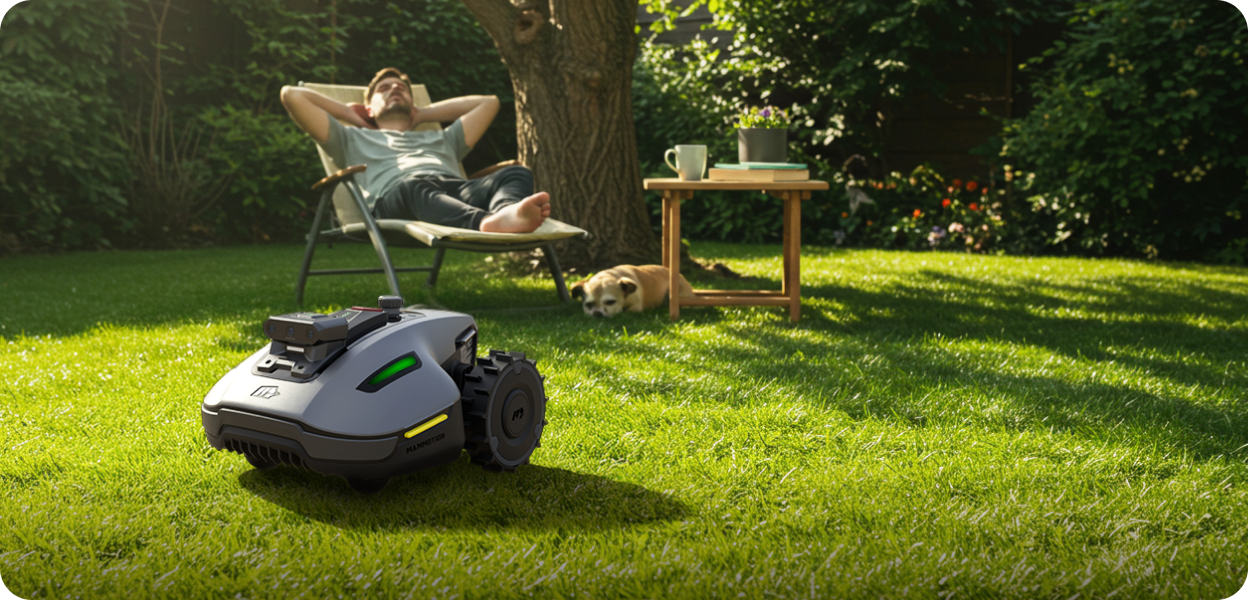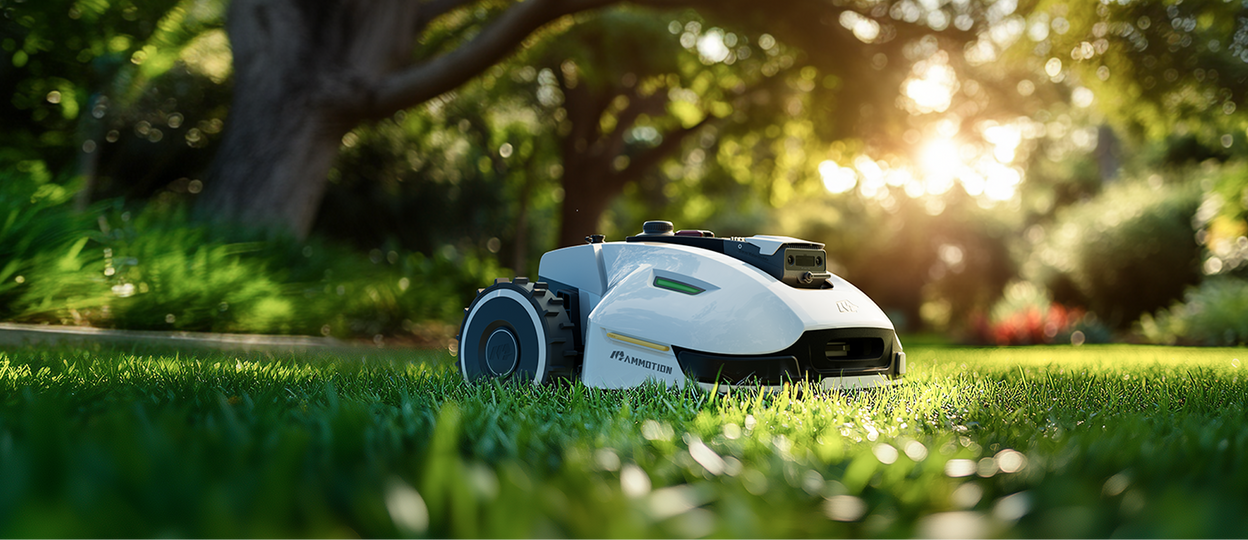Keeping a lawn healthy and attractive requires more than regular watering and fertilizing—it starts with choosing the right lawn mower. A mower that suits your lawn’s size, terrain, and grass type doesn’t just save you time; it also ensures your grass grows stronger and looks better throughout the season.
Today’s homeowners face more choices than ever. From traditional push and riding mowers to advanced robotic models that cut the grass while you relax, the market has expanded with options to fit every property type and lifestyle. However, with so many features—such as adjustable cutting heights, smart navigation, and even all-wheel drive—deciding which mower is the best fit can feel overwhelming.
That’s where this guide comes in. Drawing on the latest mower technology, real-world lawn care experience, and updated 2025 pricing data, we’ll walk you through the essential factors to consider. By the end, you’ll understand not only the different types of lawn mowers available, but also how to match one to your lawn’s unique needs and your budget.
Types of Lawn Mowers: Which One Is Right for You?
Choosing the best mower begins with understanding the categories available. Each type has strengths and trade-offs depending on your yard size, terrain, and how much effort you want to put into mowing.
1. Manual Reel Mowers: Eco-Friendly and Budget-Friendly
A reel mower is the most basic design—a set of rotating blades powered entirely by your pushing force. As you walk forward, the reel spins and slices the grass cleanly, almost like scissors.
- Best for: Small, flat lawns under 1/8 acre.
- Pros: Inexpensive ($100–$250), zero emissions, extremely quiet, low maintenance.
- Cons: Demands physical effort, struggles with tall or thick grass, not suitable for uneven ground.
- Takeaway: A great eco-friendly option if you have a small, regularly maintained yard.
2. Gas Push and Self-Propelled Mowers: Reliable Power for Tough Grass
Gas-powered mowers use internal combustion engines to spin a metal blade at high speed. Push models require you to move the mower manually, while self-propelled versions use engine power to turn the wheels, making it easier on slopes or larger lawns.
- Best for: Medium lawns up to 1/2 acre, especially with tough or coarse grass.
- Pros: High cutting power, durable, self-propelled models reduce effort, long runtime.
- Cons: Noisy (90+ dB), requires fuel, oil, and tune-ups, produces emissions.
- Takeaway: Reliable for thick grass and varied conditions, but requires more upkeep.
3. Electric Corded & Cordless Mowers: Cleaner, Quieter Alternative
Electric mowers run on electricity instead of fuel. Corded models draw continuous power from an outlet, while cordless (battery-powered) versions rely on rechargeable lithium-ion packs.
- Best for: Small to medium lawns where noise and maintenance are concerns.
- Pros: Quieter than gas, lighter weight, no fuel or oil needed, cordless models offer mobility.
- Cons: Corded versions limit range and risk cord tangling; cordless runtime is typically 30–60 minutes.
- Takeaway: A convenient middle ground for suburban homeowners seeking a cleaner option.
4. Robotic Lawn Mowers: Fully Automated Lawn Care
Robotic mowers look more like compact yard robots than traditional machines. Once set up, they navigate your lawn automatically, trimming grass in frequent, small increments. Advanced models use GPS and virtual boundaries, eliminating the need for perimeter wires.
- Best for: Busy homeowners who want low-maintenance lawns of up to several acres.
- Pros: Hands-free mowing, app control, quiet operation (55–65 dB), keeps grass consistently neat.
- Cons: Higher upfront cost ($900–$4,000+), setup required, batteries need replacement every few years.
- Takeaway: Ideal for tech-savvy users who want to save time while maintaining a perfect-looking lawn.

5. Riding & Zero-Turn Mowers: Big Machines for Big Lawns
Riding mowers let you sit on the machine and steer, while zero-turn models pivot sharply for maximum maneuverability. Both use powerful engines and wide decks to cover large areas quickly.
- Best for: Properties over 1 acre, especially with open fields.
- Pros: Fast mowing, wide cutting paths, powerful enough for long sessions, comfortable ride.
- Cons: Expensive ($3,000–$8,000+), bulky storage needs, fuel and maintenance costs add up.
- Takeaway: Best suited for acreage owners who need speed and efficiency.
Lawn Mower Comparison Table:
|
Mower Type |
How It Works |
Best For |
Typical Price (2025, U.S.) |
Pros |
Cons |
|
Manual Reel |
Blades rotate as you push, cutting grass like scissors |
Small, flat lawns under 1/8 acre |
$100 – $250 |
Very quiet, eco-friendly, low cost, minimal maintenance |
Physical effort required, struggles with tall/thick grass, not good on uneven terrain |
|
Gas Push / Self-Propelled |
Gas engine spins blade; self-propelled models power wheels |
Medium lawns up to 1/2 acre |
$300 – $700 |
Strong cutting power, durable, handles tough grass, self-propelled reduces effort |
Loud, requires fuel/oil, emissions, higher maintenance |
|
Electric (Corded / Cordless) |
Corded: powered by outlet; Cordless: rechargeable battery |
Small–medium lawns |
$350 – $900 |
Quiet, lightweight, no fuel, low upkeep |
Corded: limited range; Cordless: limited runtime (30–60 min) |
|
Robotic |
Automated mower navigates yard and trims continuously |
Small to large lawns (up to several acres, depending on model) |
$900 – $4,000+ |
Hands-free mowing, app/GPS control, quiet, consistent lawn health |
Higher upfront cost, setup required, battery replacement over time |
|
Riding / Zero-Turn |
Sit-on machine with engine and wide deck; zero-turn pivots tightly |
Large properties 1+ acres |
$3,000 – $8,000+ |
Fast mowing, wide cutting path, powerful, comfortable ride |
Expensive, large storage needed, fuel and maintenance costs |
Factors to Consider Before Buying a Lawn Mower
Knowing the different types of lawn mowers is just the starting point. The real challenge is deciding which one fits your specific lawn and lifestyle. A mower that works perfectly for a neighbor may not suit your property at all, because lawns vary widely in size, slope, grass type, and even how much time the owner wants to spend on maintenance.
1. Lawn Size: How Much Ground Are You Covering?
The size of your lawn is the single biggest factor in deciding which mower will work best. A mower designed for a small backyard simply won’t perform efficiently on a large property, and vice versa.
Measuring Your Lawn
If you’re not sure how big your lawn actually is, don’t worry—most homeowners overestimate or underestimate its size. Here are three simple ways to get an accurate measurement:
- Traditional method: Measure the length and width with a tape measure or yard wheel, then multiply. Works best for square or rectangular lawns.
- Sectional method: For irregular shapes, break the lawn into smaller rectangles or circles, measure each, then add them up.
- Digital tools: Use an online measurement app or try Mammotion’s lawn area measurement tool, which calculates square footage directly from satellite imagery.
Matching Lawn Size to Mower Type
Here’s a practical breakdown of mower choices by property size:
Small lawns (under 1/4 acre, or roughly 10,000 sq ft)
- Best options: Manual reel, corded electric, small robotic mower.
- Why: Easy to maneuver, low cost, minimal setup.
- Example: A compact robotic mower that trims daily, keeping grass tidy without effort.
Medium lawns (1/4 – 1/2 acre, 10,000–20,000 sq ft)
- Best options: Cordless electric, self-propelled gas, compact AWD robotic mower (e.g., Luba Mini AWD).
- Why: Balance of cutting power and runtime for moderate-sized properties.
- Large lawns (1/2 acre – 1 acre, 20,000–40,000 sq ft)
- Best options: Larger AWD robotic mower (e.g., Luba 2 AWD), riding mower.
- Why: Wide cutting paths and long runtime reduce mowing sessions.
Extra-large lawns (1 acre and above)
- Best options: Riding or zero-turn mower for speed, or a high-capacity robotic lawn mower with GPS mapping.
- Why: Wide decks and automation cover large areas efficiently.
Expert Tip: Remember that mower capacity ratings (like “handles up to 1/2 acre”) often assume ideal conditions—flat ground, no obstacles, and good weather. If your lawn has slopes, trees, or flower beds, choose a mower with at least 20–30% more capacity than your measured area to avoid frustration.
2. Terrains and Ground Conditions
Some are perfectly flat and easy to mow, while others have bumps, slopes, or tricky obstacles. Choosing a mower that matches your yard’s terrain is essential for safety, performance, and lawn health.
Flat Lawns
- What to know: Flat yards give you the most flexibility—almost any mower type will work.
- Best options: Manual reel, electric, gas, or robotic mowers.
- Why: You can prioritize budget, convenience, or smart features without worrying about traction or power.
Uneven or Bumpy Lawns
- What to know: Bumps and dips can scalp grass if the mower’s deck can’t adjust, and they make pushing heavier machines harder.
- Best options: Floating-deck gas or electric mowers that adjust to surface changes; Robotic mowers with suspension and terrain-tracking wheels.
- Tip: For uneven lawns, avoid very low cutting heights—they increase the risk of scalping.
Sloped Lawns
- What to know: Manufacturers rate slope handling as a percentage grade (e.g., 20% slope ≈ 11° incline). Standard robotic mowers typically handle 20–25%, while advanced models can manage up to 65%.
- Best options: Self-propelled gas or cordless mowers for medium lawns; All-Wheel-Drive (AWD) robotic mowers for steeper slopes.
- Examples: Luba 2 AWD: Handles large, hilly properties with up to 80% slope capability; Luba mini AWD: Designed for smaller yards with hills or complex layouts.
Obstacle-Rich Lawns
- What to know: Trees, flower beds, and narrow passages complicate mowing. Maneuverability and smart navigation become critical.
- Best options: Zero-turn riding mowers for large, obstacle-heavy yards; GPS-enabled robotic mowers that can navigate tight spaces and avoid collisions.
Expert Tip: Always check your mower’s terrain rating before buying. A mower designed only for flat ground may slip, stall, or wear out prematurely on slopes and rough areas. If your property mixes flat and sloped zones, choose a mower rated for the most demanding section of your yard.
3. Cutting Height for Your Grass Type
The cutting height of your mower is more than just a preference—it directly affects your lawn’s health, appearance, and resilience. Cutting too short can stress grass, invite weeds, and leave brown patches, while leaving it too long can create thatch buildup and uneven growth.
Understanding Cutting Heights
Most mowers offer adjustable cutting heights, typically ranging from 1 to 4 inches (25–100 mm). Some advanced robotic and riding mowers allow even finer adjustments.
Cool-season grasses (like Kentucky bluegrass, fescue, ryegrass):
- Optimal mowing height: 2.5–4 inches
- Why: Taller blades shade roots, reduce water loss, and maintain density.
Warm-season grasses (like Bermuda, Zoysia, St. Augustine):
- Optimal mowing height: 1–3 inches
- Why: These grasses grow more vigorously and can handle shorter cuts without stress.
Adjustability of Lawn Mower Matters
- Manual/Push mowers: Usually have lever adjustments, often 3–5 preset heights.
- Electric & Gas mowers: Modern models allow easy deck adjustments, sometimes even foot-operated.
- Robotic mowers: Offer digital control over cutting height, enabling automatic fine-tuning for different zones.
Mulching vs. Clippings Collection
- Mulching: Blades finely chop clippings, returning nutrients to the soil. Ideal for regular mowing.
- Bagging: Collects clippings for compost or disposal. Recommended if you prefer a clean lawn or have tall grass.
Expert Tip: Change your cutting height seasonally. In summer, raise blades slightly to reduce water stress; in spring and fall, slightly shorter cuts help new growth flourish. Also, never remove more than one-third of the grass height at a time—cutting too much stresses the lawn and slows recovery.
4. Budget Considerations When Choosing a Lawn Mower
Selecting the right lawn mower involves balancing your lawn care needs with your budget. Prices can vary significantly based on mower type, features, and brand. Here's a breakdown of typical price ranges for 2025:
- Manual Reel Mowers Price Range: $90 – $250
- Gas-Powered Push and Self-Propelled Mowers Price Range: $300 – $700
- Electric (Corded and Cordless) Mowers Price Range: $200 – $600
- Robotic Mowers Entry-Level: $500 – $1,000; Mid-Range: $1,000 – $2,500; High-End: $2,500 – $5,000+
- Riding and Zero-Turn Mowers Price Range: $2,500 – $8,000+
Expert Tip: When budgeting, consider both the initial purchase price and long-term costs such as maintenance, fuel, or battery replacements. For instance, robotic mowers may have higher upfront costs but can save time and effort in the long run.
5. Smart Features of Lawn Mower
Modern lawn mowers, especially robotic models, have evolved far beyond simply cutting grass. Smart features enhance convenience, safety, and precision, making your mowing experience more efficient and enjoyable. It's important to understand which smart features of a lawn mower you need:
GPS and Navigation Systems
- How it works: Advanced robotic mowers use GPS or boundary wires to map your lawn and navigate efficiently.
- Benefit: Ensures full coverage without missing patches, avoids over-mowing the same area, and optimizes battery usage.
App-Based Control and Scheduling
- How it works: Many robotic mowers can be controlled via smartphone apps.
- Benefit: Start, stop, and schedule mowing sessions remotely; monitor progress in real-time.
- Extra: Some models allow zone-specific schedules for lawns with multiple areas or varying grass types.
Obstacle Detection and Safety Sensors
- How it works: Sensors detect trees, pets, or furniture, automatically slowing or stopping the mower.
- Benefit: Reduces the risk of accidents and protects both your lawn and the mower.
Rain and Weather Sensors
- How it works: Sensors detect wet conditions and adjust mowing behavior or pause operations.
- Benefit: Prevents uneven cuts, reduces soil compaction, and protects blades from damage.
Theft Protection
- How it works: PIN codes, alarms, or GPS tracking prevent unauthorized use or theft.
- Benefit: Provides peace of mind, especially for high-end robotic models.
Who Needs These Smart Features:
- Busy homeowners: Set a robotic mower to run while at work and return to a perfectly maintained lawn.
- Complex lawns: Use app controls to schedule mowing in separate zones with different grass types.
- Safety-conscious families: Sensors prevent accidents around children or pets.
Expert Tip: Not every smart feature is essential for every lawn. Identify the features you will actually use—extra sensors or GPS mapping are invaluable for large or obstacle-heavy lawns but may be unnecessary for a small, flat backyard.
6. Other Important Criteria of Choosing a Lawn Mower
Beyond lawn size, terrain, cutting height, budget, and smart features, several additional factors can significantly affect your mowing experience. Considering these criteria ensures you choose a mower that’s practical, durable, and well-suited to your lifestyle.
1. Noise Levels
- Why it matters: Gas mowers can exceed 90 decibels, while electric and robotic mowers typically operate around 55–65 decibels.
- Recommendation: For urban or suburban neighborhoods, quieter electric or robotic mowers reduce disturbances for neighbors and are easier on your ears.
2. Maintenance Requirements
- Gas mowers: Require regular fuel, oil changes, and engine maintenance.
- Electric mowers: Minimal upkeep; check batteries and blades periodically.
- Robotic mowers: Blade replacement every few months, battery maintenance, and occasional firmware updates.
3. Cutting Width and Efficiency
- Wide decks: Cover more ground per pass, ideal for large lawns.
- Narrow decks: Better for maneuvering around obstacles, flower beds, and tight corners.
4. Warranty and Service
- Why it matters: Lawn mowers, especially robotic and gas-powered models, involve significant investment.
- Check: Length of warranty, availability of replacement parts, and local service centers.
5. Additional Considerations
- Storage space: Riding and larger mowers require a garage or shed.
- Climate and seasonal use: If you live in a region with harsh winters, some mowers may need winter storage or battery removal.
- User comfort: Self-propelled and riding mowers reduce physical strain; robotic mowers require almost no manual effort.
Expert Tip: Make a checklist of the “must-have” criteria versus “nice-to-have” features. This keeps your selection process focused, helping you choose a mower that balances performance, convenience, and cost.
Matching Lawn Mower Types to Your Needs
Now that you understand lawn mower types and the key factors to consider, it’s time to match your lawn’s characteristics and your personal needs to the right mower. The goal is to balance efficiency, convenience, and cost so that you get a mower suited to your property and lifestyle.
|
Lawn / User Type |
Recommended Mower Type |
Why It Works |
Example Models |
|
Small Urban Lawns (<1/4 acre) |
Manual reel, corded electric, compact robotic |
Maneuverable, low maintenance, quiet |
Compact robotic mowers, basic corded electric push mowers |
|
Medium Suburban Lawns (1/4 – 1/2 acre) |
Cordless electric, self-propelled gas, AWD robotic |
Balance of power, runtime, and smart features; handles moderate slopes |
Luba mini AWD, cordless self-propelled mowers |
|
Large / Multi-Acre Properties (1/2 – 1 acre) |
AWD robotic, riding mower |
Wide cutting paths and longer runtime reduce mowing time |
Luba 2 AWD, zero-turn riding mowers |
|
Sloped or Uneven Terrain |
Self-propelled gas, AWD robotic |
Traction and stability on hills or bumps |
Luba 2 AWD, Luba mini AWD |
|
Eco-Friendly / Low-Maintenance |
Electric or robotic |
Zero emissions, quiet operation, minimal effort |
Robotic mowers with app scheduling, cordless electric mowers |
|
Obstacle-Rich Lawns |
GPS-enabled robotic, zero-turn riding |
Advanced navigation handles tight spaces and garden beds |
GPS robotic mowers, zero-turn riding mowers |
Always match your mower to the most challenging aspect of your lawn, whether that’s a slope, uneven ground, or obstacles. Choosing a mower rated for the toughest area ensures consistent results across the entire property.
Conclusion: Making the Right Choice for Your Lawn
Choosing the right lawn mower is about more than just picking the newest or most expensive model. A mower that fits your lawn size, terrain, grass type, budget, and lifestyle can save you time, reduce effort, and keep your grass healthier year-round.
To recap:
- Know your lawn size: Small, medium, or large lawns each require different mower capacities.
- Consider terrain and ground conditions: Flat, uneven, or sloped lawns affect traction, cutting performance, and mower type.
- Set the right cutting height: Grass type and seasonal growth patterns determine the optimal blade height.
- Plan your budget: Include both upfront costs and ongoing maintenance, fuel, or battery expenses.
- Evaluate smart features: GPS, app control, and sensors can simplify mowing, especially for larger or complex lawns.
- Factor in other criteria: Noise, maintenance, cutting width, and warranty all impact your overall experience.
By following these guidelines and using the comparison tables throughout this guide, you can confidently select a mower that meets your needs while providing consistent, high-quality results.
Final Tip: If you’re still unsure, try online tools like Mammotion’s lawn measurement tool to better understand your lawn’s size and layout, then match that information to the mower types and recommendations in this guide.
Investing time upfront in selecting the right mower pays off with a healthier lawn, less effort, and a smarter mowing routine—whether you choose a traditional push mower, a high-tech robotic system, or a riding mower for large properties.










